With both “proposition” and “hypothesis,” the formulation of a possible answer to a specific scientific question is meant. A proposition specifically addresses the relationship between two existing concepts. A proposition deals with concepts for which there are currently no laboratory tests available, but a hypothesis must be tested and measurable.
Hypothesis
According to the scientific method, formulating a hypothesis is the initial step in formulating a theory. It’s an educated guess based on research and practical experience.
When we want to transform a qualitative analysis into a quantitative analysis, we use the proposition to create a hypothesis and test it using the data sets.
A hypothesis must offer a prediction that researchers can test with a repeatable experiment in order to be accepted as valid. A hypothesis cannot be regarded as a part of a valid scientific theory if it cannot be proven false by experimentation.
Read More: Research Hypothesis | Step by Step Guide to Write Hypothesis
Example of Hypothesis
H1: Academic achievement of students is strongly correlated with their IQ scores.
H1 shows the directionality but not the causality.
H2: Students IQ scores have positive effects on their academic achievement.
H2 defines both the directionality and the causality, and it is better hypothesis.
Read More: Directional vs. Non-Directional Hypothesis in Research
Additionally, keep in mind that independent and dependent variables should be stated in scientific hypotheses. It is evident that academic achievement is the dependent variable that is the effect.
In the hypothesis that “students’ IQ scores have positive effects on their academic achievement.” Intelligence is the independent variable that is cause.
Read More: Difference between Premise, Hypothesis and Supposition
Propositions
A theory is developed based on the existing literature in a field. A collection of assumptions is formed based on this theory, and a proposition is then developed from these assumptions. The nature of propositions is qualitative.
Read More: Abstract for Research Paper
Similar to a hypothesis, a proposition’s main goal is to indicate a connection between two concepts when an experiment cannot prove the relationship. As a result, it makes extensive use of previous research, reasonable assumptions, and correlative evidence. A proposition can be used by a scientist to encourage additional investigation into a problem or posed in the hope that new data or experimental techniques will be found to convert it to a testable hypothesis.
Example of Proposition
P1: Students’ academic achievement increases as their intelligence increases.
Despite not having to be true, this declarative statement must be testable empirically using evidence so that we can determine whether it is true or not. In general, Propositions are drawn through logic (deduction) or empirical observations (induction).
Read More: Best Research Methodology Books for Researchers and Academics
Difference between Proposition and Hypothesis
| Proposition | Hypothesis |
| Inductive study | Deductive study |
| Explore the Study phenomenon | Testable statement between two measurable variables |
| Unclear nature of causal relationship between two variables | Indicates nature of relationship |
| Based on Assumptions | Tested theoretically & empirically |
| Research is conducted on new phenomena | Formulation of hypothesis is based on already existing phenomena |
| Qualitative | Quantitative |
1- The findings of an inductive study are the propositions. Contrarily, a hypothesis is deductive and put to the test later on in the research.
2- The study phenomena is explored in propositions when there is no prior empirical evidence. While a hypothesis, which is a testable statement regarding the theoretical relationship among two quantifiable variables, comes after a proposition.
3- The nature of the causal relationship between two variables or concepts is unclear in a proposition. The Hypothesis, on the other hand, describes the type and occasionally the direction of relationships with respect to the target variable.
4- In order to formulate the proposition, a quantitative study is required if the study phenomenon is unexpected.
Contrarily, the formation of a hypothesis during quantitative research is sufficient as long as the studied phenomenon is not unexpected.
5- A proposition is similar to making an assumption. A hypothesis, however, can be examined both theoretically and empirically.
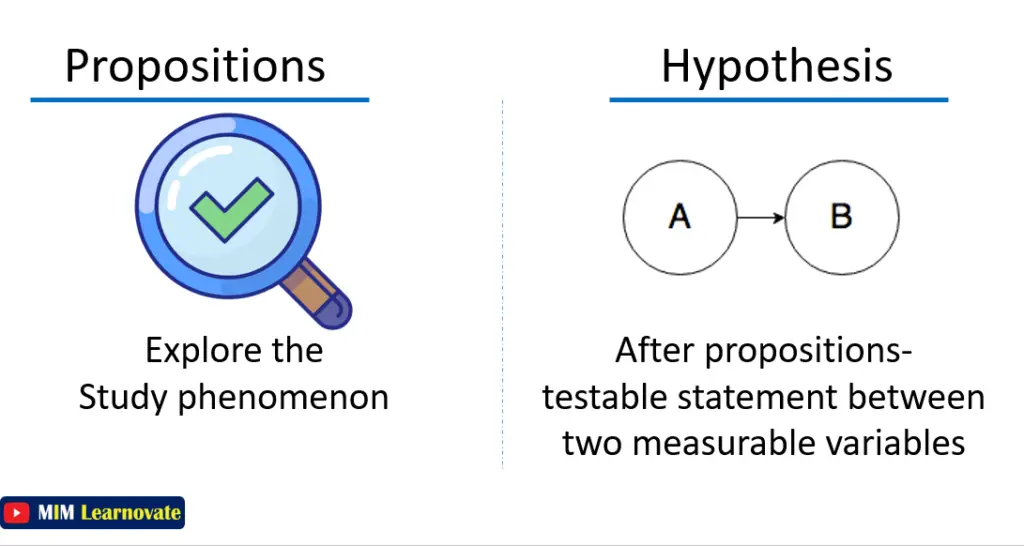
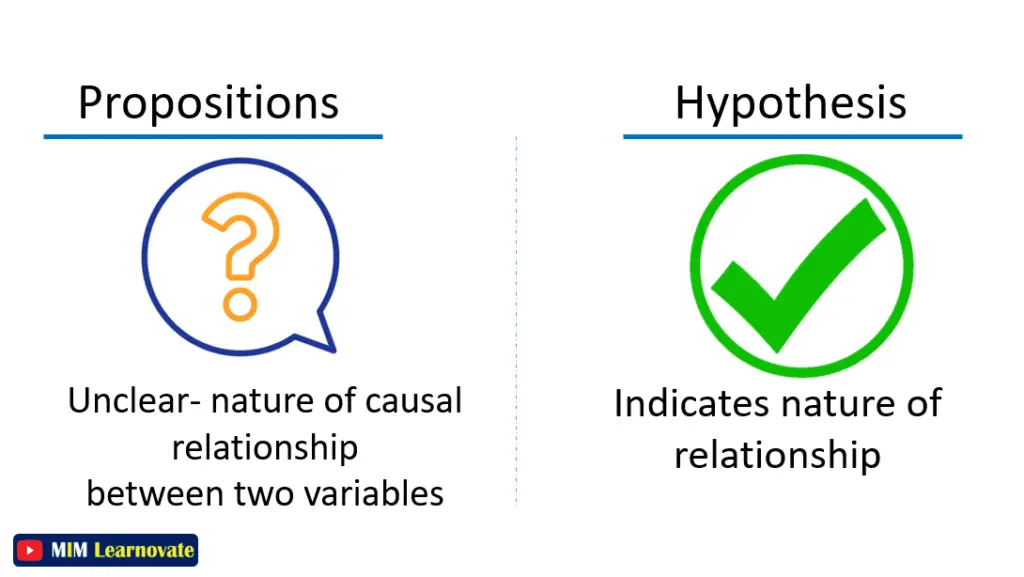
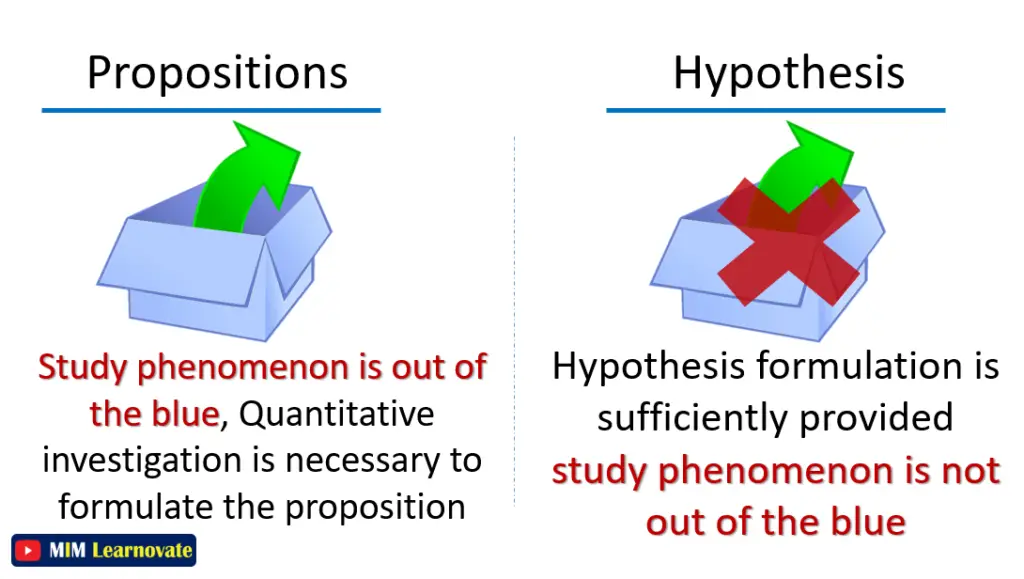
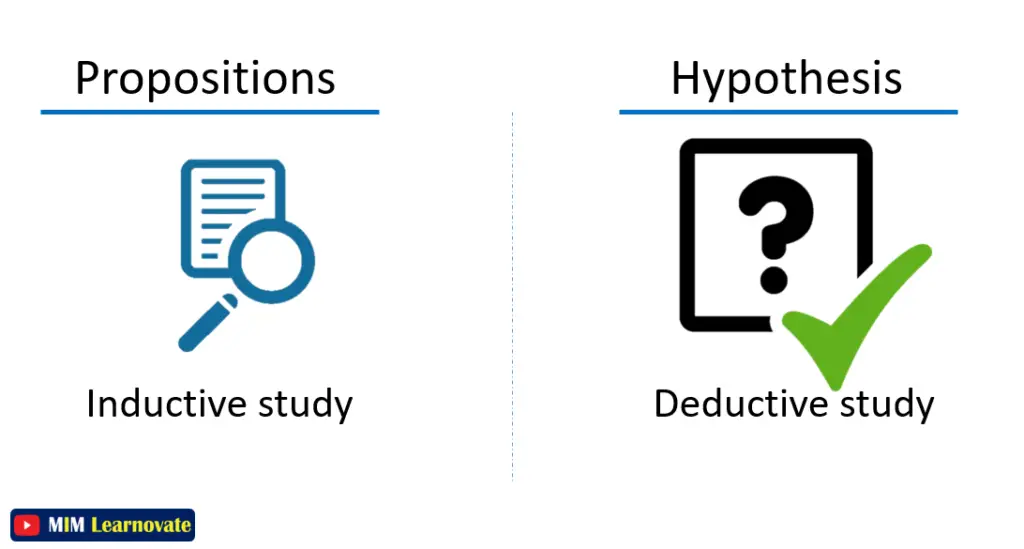
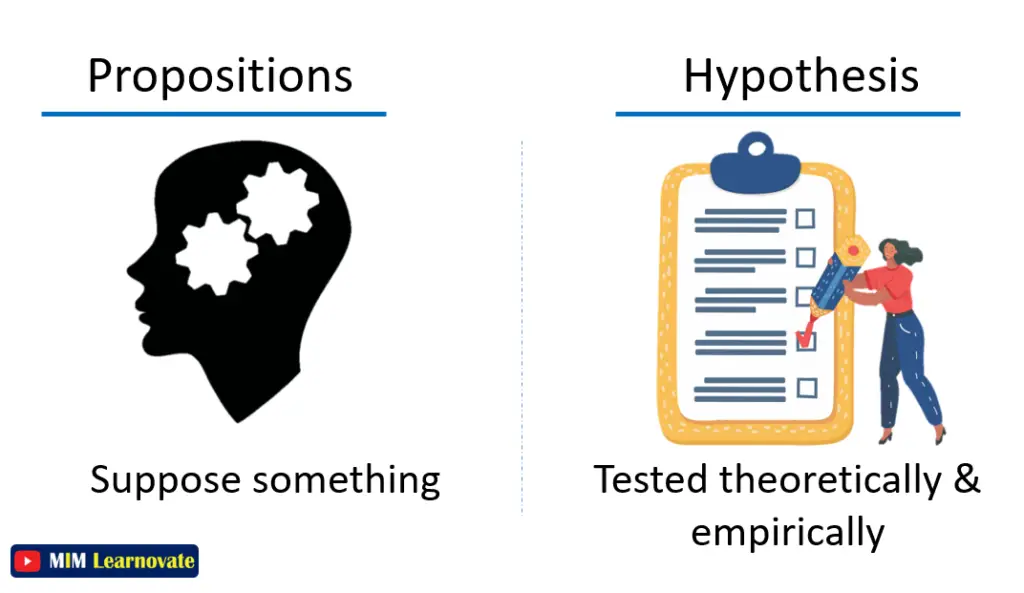
Examples of Proposition and Hypothesis
1- Assume for the moment that private schools offer higher-quality education. We’ll say in the case of the proposition.
P: Higher quality education is being delivered by private schools.
It is evident that it is examining the research phenomenon.
We shall state in the case of the hypothesis.
H: Private schools impart better quality education than government schools.
Between two measurable variables, you can see a testable statement.
2- Assume that the finding is that kids of divorced parents experience emotional issues.
We’ll say in the case of the proposition.
P: Divorce leads to emotional problems in young children.
As you can see, there is uncertainty regarding the nature of the causal relationship that exists between the two variables.
We shall state in the case of the hypothesis.
H: Children whose parents have divorced are more likely to show emotional problems than children whose parents are not divorced.
As you can see, there is no doubt about the nature of the causal relationship that exists between the two variables.
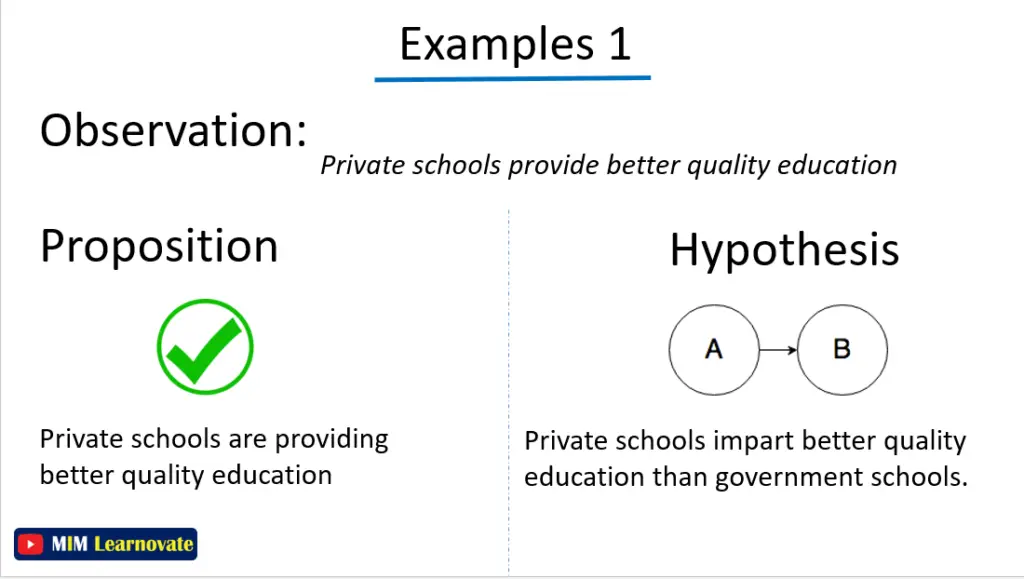
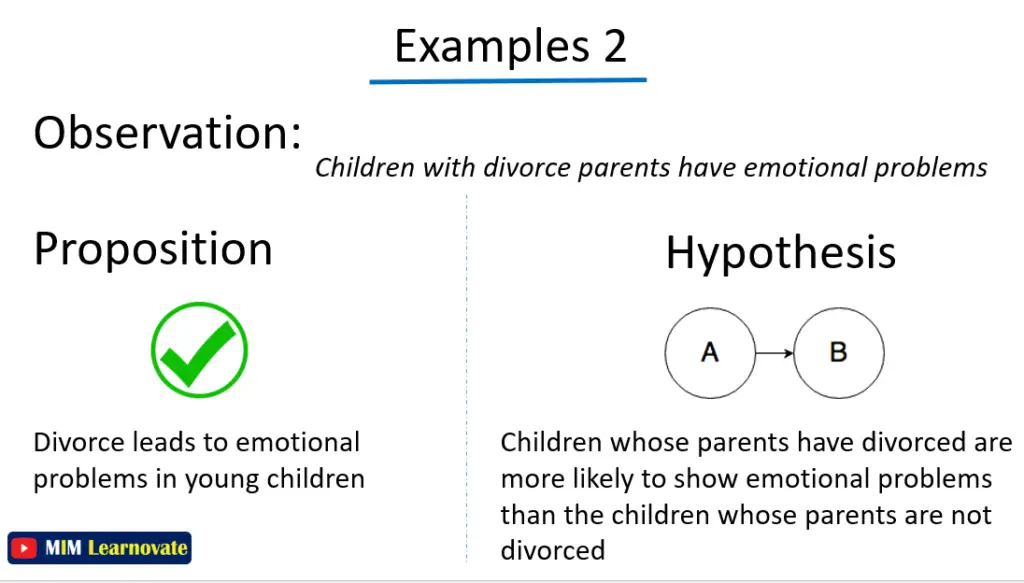
Other articles
Please read through some of our other articles with examples and explanations if you’d like to learn more about research methodology.
Comparision
- Basic and Applied Research
- Cross-Sectional vs Longitudinal Studies
- Survey vs Questionnaire
- Open Ended vs Closed Ended Questions
- Experimental and Non-Experimental Research
- Inductive vs Deductive Approach
- Null and Alternative Hypothesis
- Reliability vs Validity
- Population vs Sample
- Conceptual Framework and Theoretical Framework
- Bibliography and Reference
- Stratified vs Cluster Sampling
- Sampling Error vs Sampling Bias
- Internal Validity vs External Validity
- Full-Scale, Laboratory-Scale and Pilot-Scale Studies
- Plagiarism and Paraphrasing
- Research Methodology Vs. Research Method
- Mediator and Moderator
- Type I vs Type II error
- Descriptive and Inferential Statistics
- Microsoft Excel and SPSS
- Parametric and Non-Parametric Test
Comparision
- Independent vs. Dependent Variable
- Research Article and Research Paper
- Proposition and Hypothesis
- Principal Component Analysis and Partial Least Squares
- Academic Research vs Industry Research
- Clinical Research vs Lab Research
- Research Lab and Hospital Lab
- Thesis Statement and Research Question
- Quantitative Researchers vs. Quantitative Traders
- Premise, Hypothesis and Supposition
- Survey Vs Experiment
- Hypothesis and Theory
- Independent vs. Dependent Variable
- APA vs. MLA
- Ghost Authorship vs. Gift Authorship
Research
- Research Methods
- Quantitative Research
- Qualitative Research
- Case Study Research
- Survey Research
- Conclusive Research
- Descriptive Research
- Cross-Sectional Research
- Theoretical Framework
- Conceptual Framework
- Triangulation
- Grounded Theory
- Quasi-Experimental Design
- Mixed Method
- Correlational Research
- Randomized Controlled Trial
- Stratified Sampling
- Ethnography
- Ghost Authorship
- Secondary Data Collection
- Primary Data Collection
- Ex-Post-Facto
Research
- Table of Contents
- Dissertation Topic
- Synopsis
- Thesis Statement
- Research Proposal
- Research Questions
- Research Problem
- Research Gap
- Types of Research Gaps
- Variables
- Operationalization of Variables
- Literature Review
- Research Hypothesis
- Questionnaire
- Abstract
- Validity
- Reliability
- Measurement of Scale
- Sampling Techniques
- Acknowledgements
Statistics



